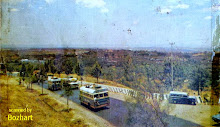DECAFFEINATED COFFEE FACTS
Decaffeinated coffee is one of the fastest growth areas in the roasted coffee industry.This growth is being driven by people who want to drink coffee but don't want the side-effects of caffeine. But you need to consider, that drinking 5 cups of decaffeinated coffee a day, just the same as drinking 2 cups of regular coffee has a high caffeine content.Because it still have caffeine but in a small amount.Regular coffee contains about 85 milligrams of caffeine per cup while supposedly decaffeinated coffee contains between 3 and 15.8 milligrams of caffeine per cup. So if the doctor advised you to avoid caffeine altogether, decaffeinated coffee also should not you drink.So in its principle, any type of coffee drink, still don't to much, 2-3 cups a day is enough. Because if the body too much caffeine injected, it will be bad for the health - see more caffeine addiction and caffeine overdose symptoms.
.
Decaffeinated coffee is coffee that has been processed at the green bean stage to remove most of the caffeine.This shouldn't change the taste of coffee, as caffeine is a white crystalline substance with no aroma and a bitter flavour.The coffee is decaffeinated before the delicate flavours and aromas are developed by roasting.Once processed, it should have only small percentage of the caffeine of unprocessed coffee.There are three decaffeinated coffee methods:
DECAFFEINATED COFFEE METHODS
SOLVENT METHODThis is the oldest and most common method.Green beans are steamed to open up the cells, then soaked in a solvent that selectively unites with the caffeine.The beans are then steamed again to remove any remaining solvent before being dried and roasted.Solvents are the issued her, as people are concerned about solvent residue in the coffee.In 1975, the National Cancer Institute in the United States issued an alert on a common solvent, trichloroethylene, naming it as a possible cause of cancer.Other solvents have replaced trichloroethylene, but issues still remain around their use.
CARBON DIOXIDE METHOD
This method, which is not widely used, takes advantage of the fact that carbon dioxide in its compressed state behaves partly like a gas and partly like a liquid and combines directly with caffeine.The green beans are bathed in compressed carbon dioxide, then caffeine is removed from the carbon dioxide through charcoal filters.The flavour components are not soaked out of the beans.
In this method, the various chemical compounds found on coffee, including caffeine, are removed through soaking the green coffee in very hot water.The water is then stripped of the caffeine through charcoal filters.The beans are then returned to the caffeine-free water where they re-absorb the remaining compounds.This is the most favoured decaffeinated coffee method and its constantly being refined and improved.
It is difficult to determine which method produces the best flavour outcome in roasted coffee.However, in general, coffee decaffeinated in any of these ways shouldn't taste noticeably different from unprocessed coffee.Many people still experience the 'high' that occurs after drinking coffee when they drink decaffeinated coffee.




